You have definitely noticed that fashion has a significant impact on flower choices. The emergence of new trends in bouquet […]
The greenery that adds beauty to every bouquet and arrangement
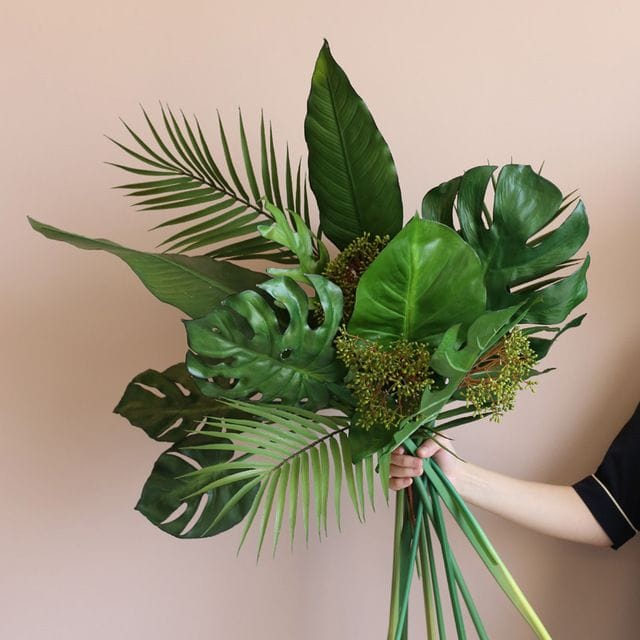
A bouquet is not just a collection of flowers – it is an expression of emotion, style and attention to detail. And greenery is what gives completeness, depth and freshness to any floral arrangement. In our store we offer specially selected types of greenery that can be used in various arrangements – from romantic bouquets to exotic compositions and bridal arrangements. Each greenery has its own symbolism, history and meaning. Let's take a closer look at them!
Solidago (Solidago)
Solidago, also known as goldenrod, is a beautiful and resilient plant found in North America and Europe. Its name comes from the Latin word solidar, meaning “to strengthen” or “to heal.” In traditional medicine, the goldenrod has been used for various medicinal purposes, and in floriculture, it symbolizes luck, success, and prosperity.
Solidago has delicate, small yellow flowers that grow in branched racemes. Its bright golden color brings warmth and sunshine to any arrangement. Its leaves are green and oblong, and its stems are thin and elastic.
What is it good for?
The goldenrod is extremely popular in fall bouquets, but is used year-round for its versatility and ability to highlight other flowers. It adds lightness and volume to arrangements, while also enlivening them with its bright yellow colors.
Combination:
It combines wonderfully with roses, chrysanthemums, sunflowers and other flowers. It is perfect for bouquets in warm colors - yellow, orange, red, emphasizing the energy and vitality of the composition.
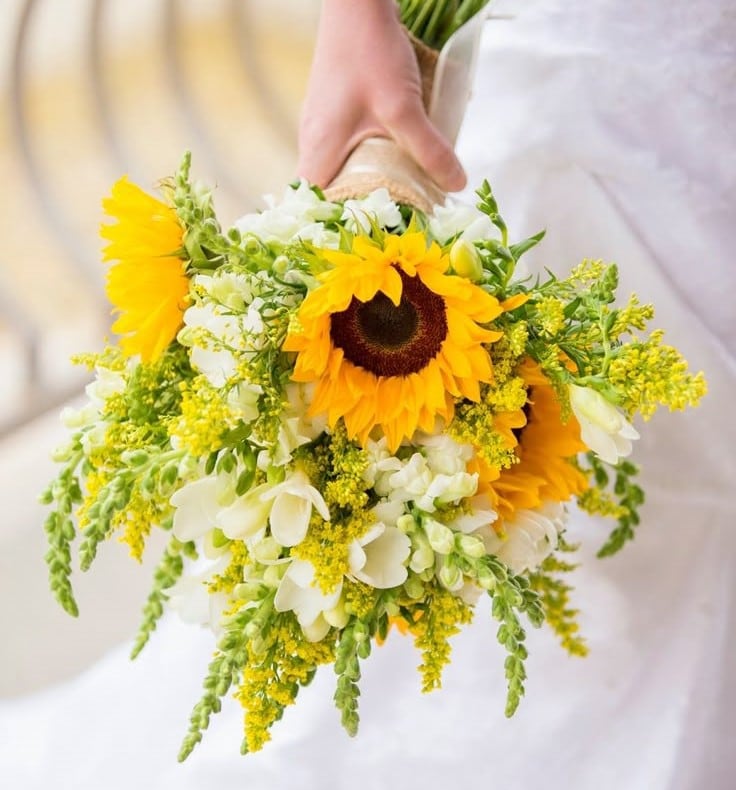
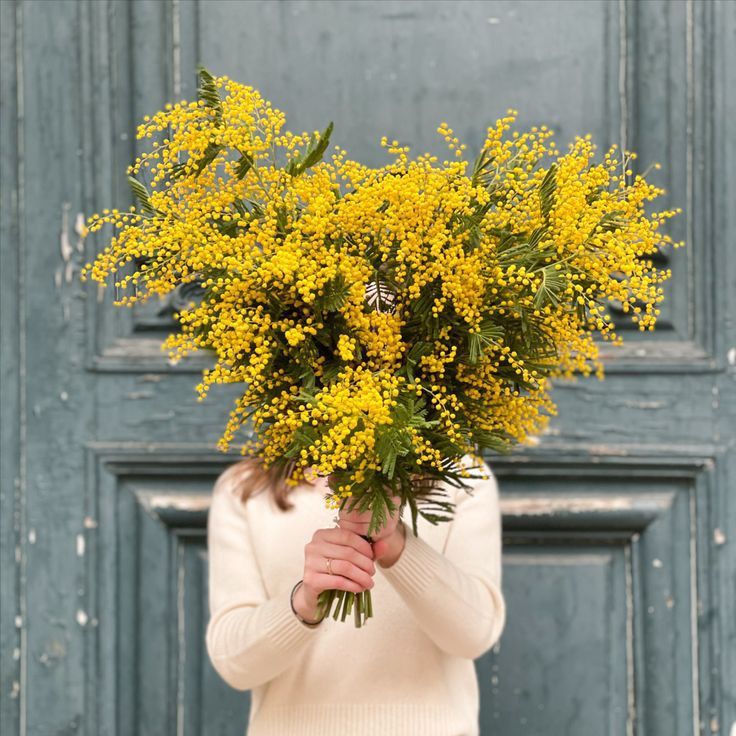
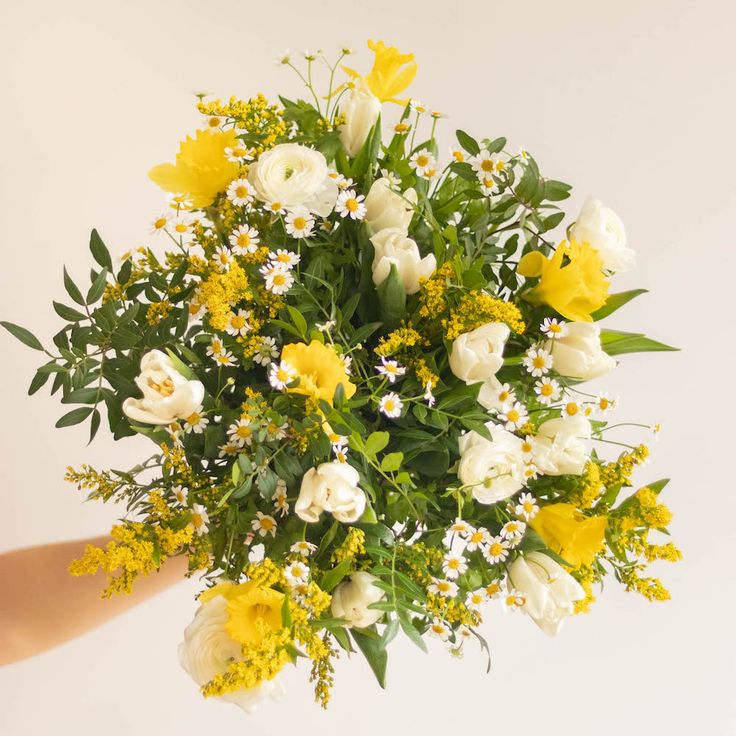
Eucalyptus
Eucalyptus is native to Australia and is considered one of the most useful plants in the world. In addition to being known for its medicinal properties, it is used in floristry for its unique aesthetics. In its symbolism, eucalyptus is associated with renewal, protection and peace.
It has characteristic rounded or elongated grayish-green leaves with a slight waxy coating. They emit a refreshing aroma that creates a feeling of purity and freshness. Its stems are flexible, which allows it to be used in various styles of bouquets and decorations.
What is it good for?
Eucalyptus is extremely popular in modern, minimalist and rustic bouquets. It is used for both fresh and dry arrangements. It gives airiness and elegance, and is often used to complement bouquets with a gentle and natural style.
Combination:
It combines beautifully with roses, hydrangeas, tulips, peonies, anemones, and more. Eucalyptus is versatile and can be included in wedding bouquets, holiday arrangements, and even interior decorations.
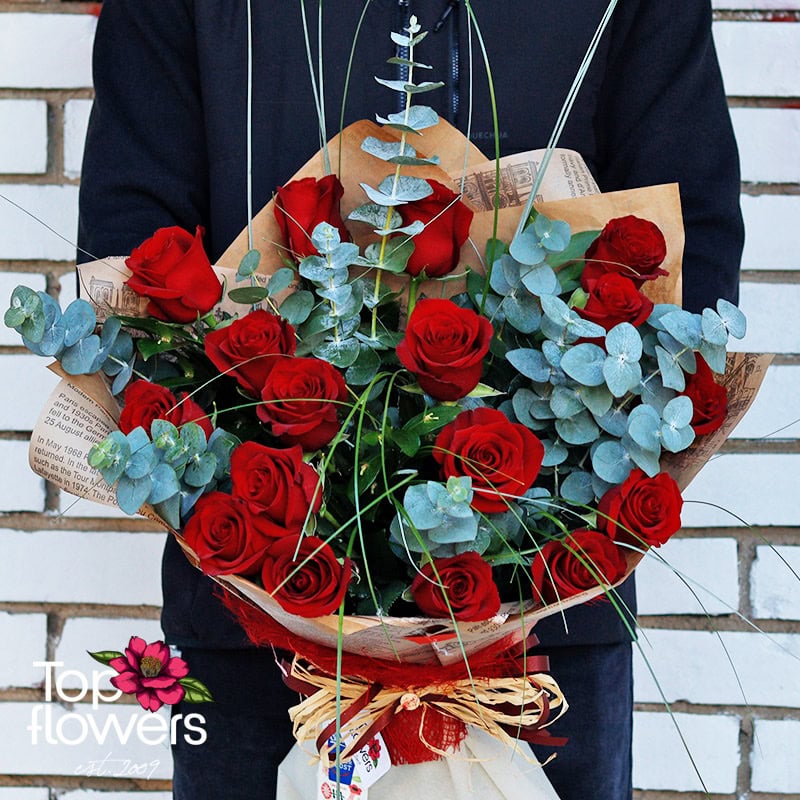
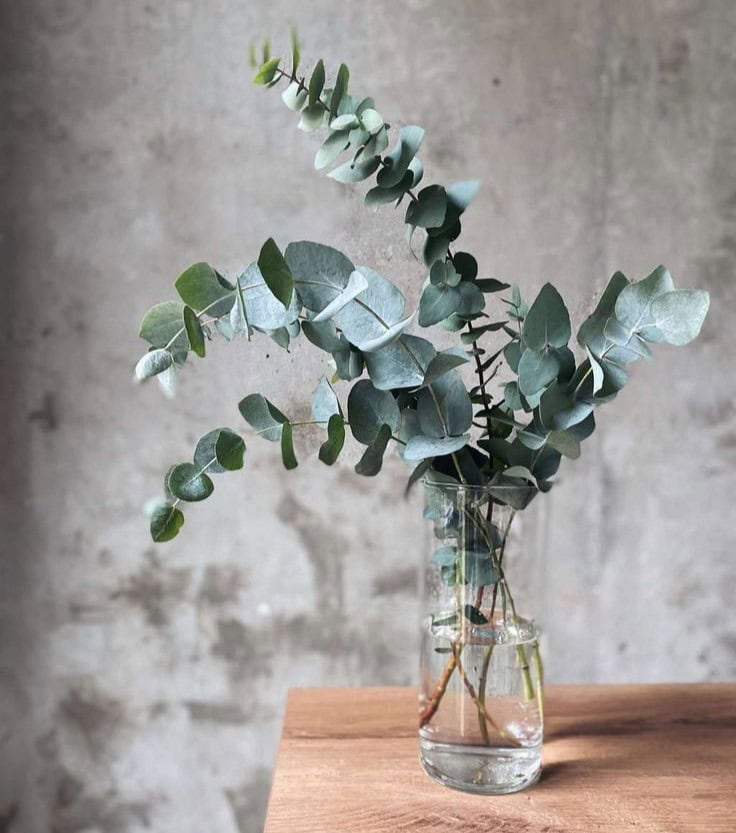
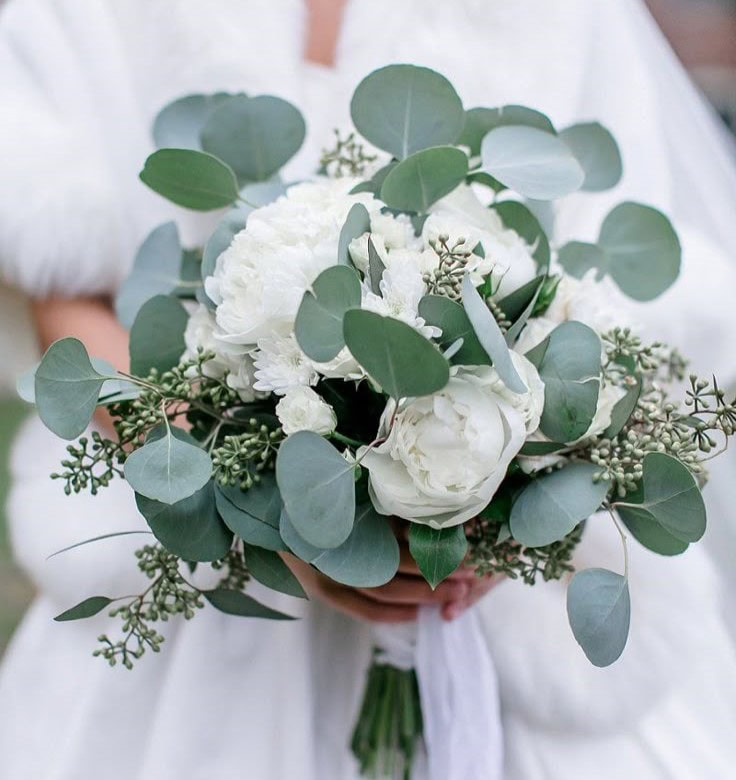
Gypsophila – Bridal Veil
Gypsophila, also known as bridal veil, originates from the Mediterranean and Asia. It is perceived as a symbol of purity, tenderness and eternal love. Over the centuries, it has been used in various rituals and ceremonies, with its greatest importance being associated with bridal bouquets, where it symbolizes the innocence and tenderness of the bride. It is a delicate plant with small white flowers that are located on long stems. Its leaves are small and lanceolate, just as delicate as its flowers. It has a soft and airy feel that creates visual space and lightness in compositions. It combines beautifully with other flowers, adding volume and romance.
What is it good for?
Gypsophila is ideal for bridal and romantic bouquets, as well as for any arrangements that require lightness and airiness. It goes wonderfully with spring and summer flowers, such as tulips and roses.
Combination:
It combines wonderfully with roses, mini roses, freesias, tulips and anemones. Thanks to its tenderness, it adds harmony and elegance to any arrangement, creating a truly beautiful and romantic effect.
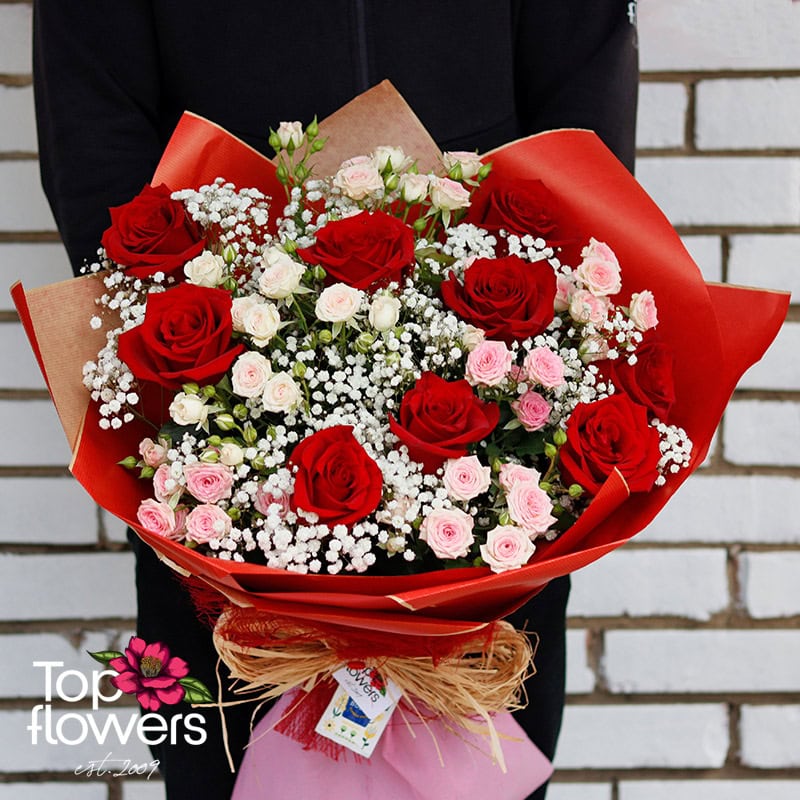
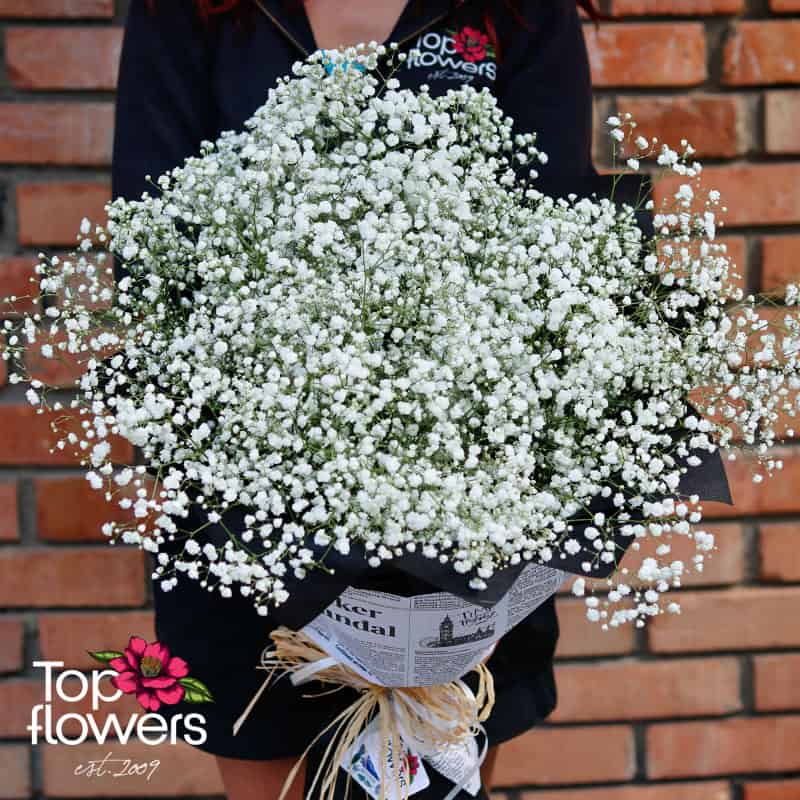
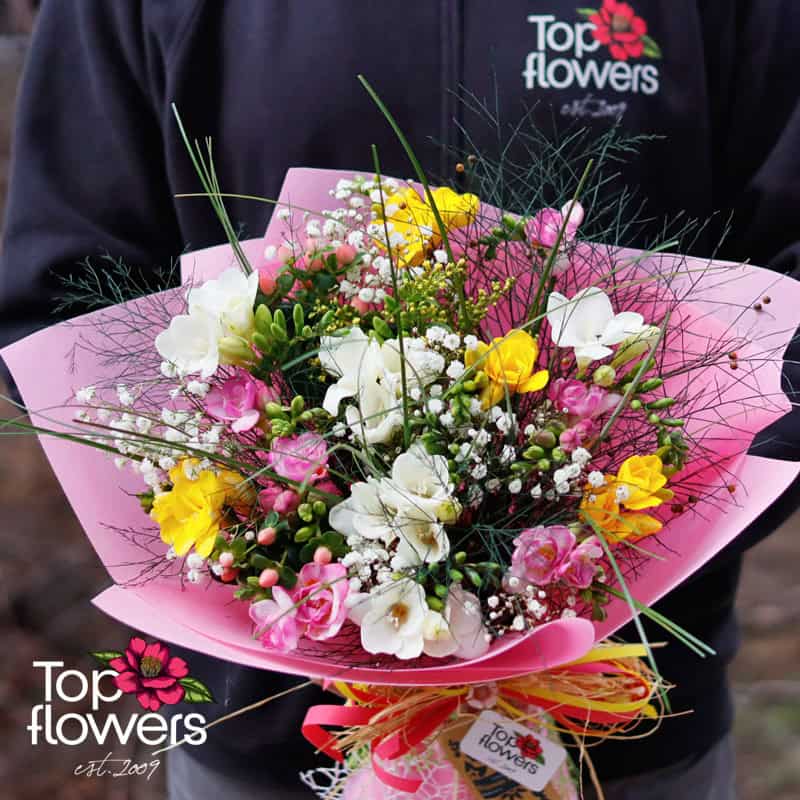
Bear grass (Bear grass - Nolina microcarpa)
Beargrass, or Nolina microcarpa, is a plant native to North America, particularly Mexico and the southern United States. It was traditionally used by Native Americans for basketry and various woven products. Although there are no traditional myths or legends, the plant is associated with durability and practicality, as well as the earth element.
Beargrass has light green, thin and long leaves that form a striking and dynamic structure. Its leaves are distinguished by their elasticity and can easily be used to add movement and interest to arrangements.
What is it good for?
This greenery is perfect for modern arrangements and bouquets, adding depth and interest. It is great for summer and fall bouquets that want to combine structure with natural movement.
Combination: Beargrass pairs very well with flowers such as strelitzia, lilies, gerberas and chrysanthemums. Its durability and unique shape create a perfect contrast and add sophistication and movement to arrangements.
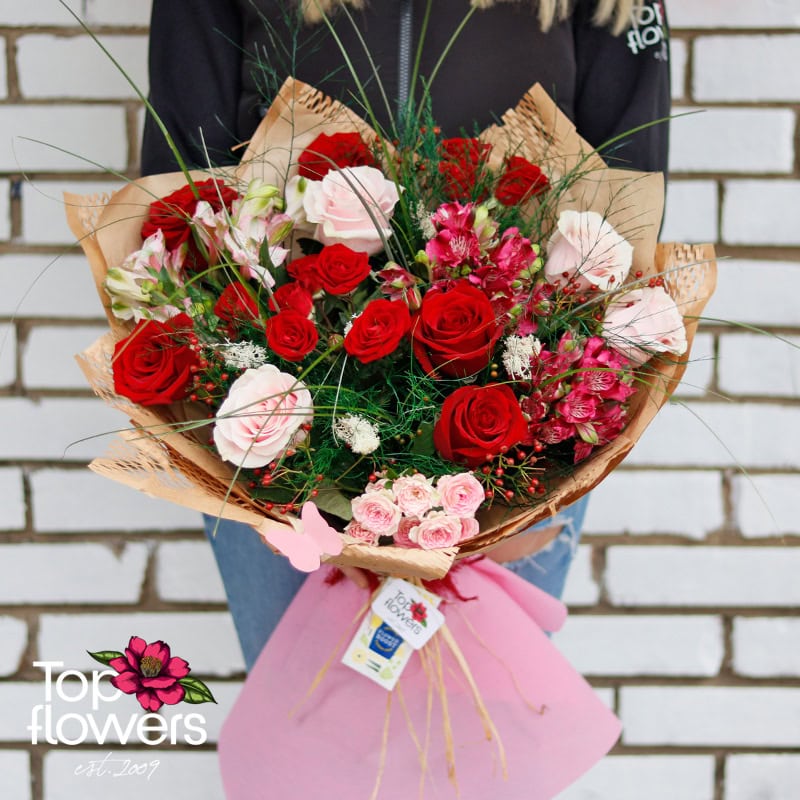
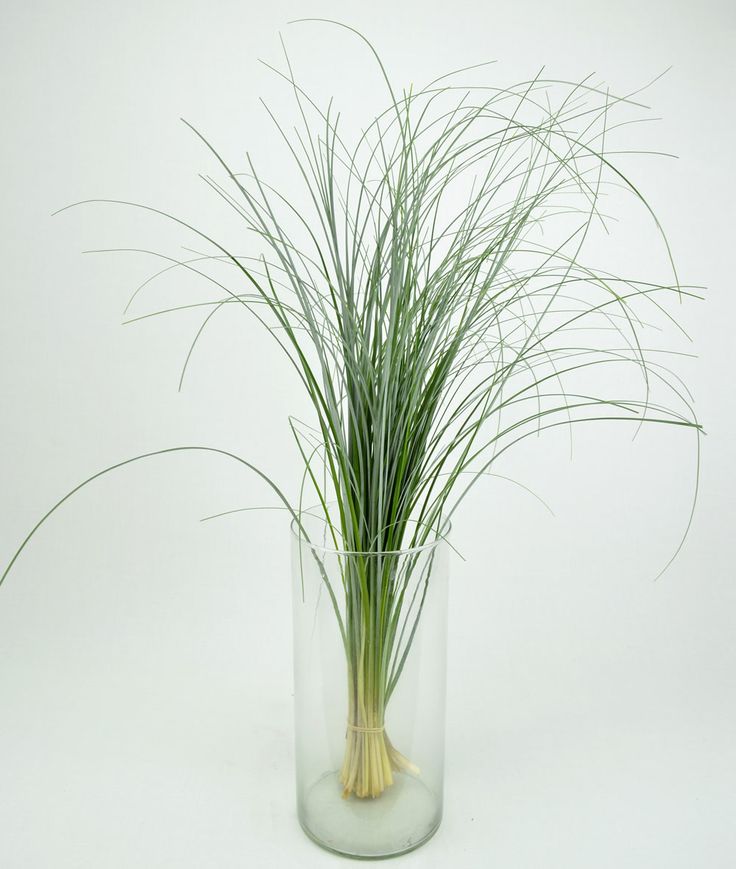
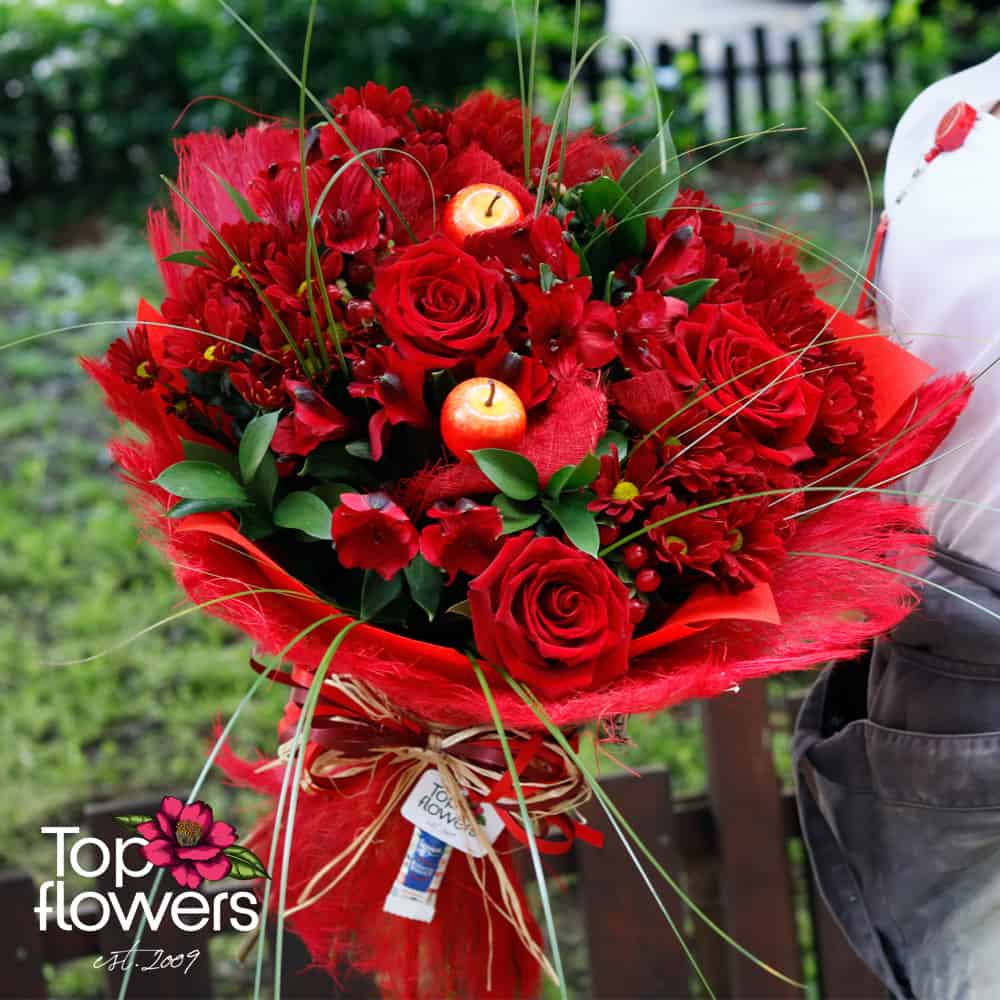
Pistache (Pistache foliage)
The pistachio tree, known for its ornamental use, is found mainly in Asia and North Africa. Its leaves are extremely dense, hard, strong, durable and beautifully shaped, making it ideal for arrangements with a long-lasting effect. This foliage symbolizes abundance and harmony, as its deep green is in perfect contrast with the bright colors of the flowers
Their rich green color adds stability and density to any composition.
This makes them a perfect choice for creating balance and volume in arrangements
What is it good for?
Pistachio is great for fall and winter arrangements. Due to its abundant and sturdy structure, it is ideal for creating classic bouquets and compositions that require stability and density.
Combination:
This greenery pairs beautifully with roses, carnations, and chrysanthemums. It highlights the bright hues of these flowers and adds balance and volume to the composition.
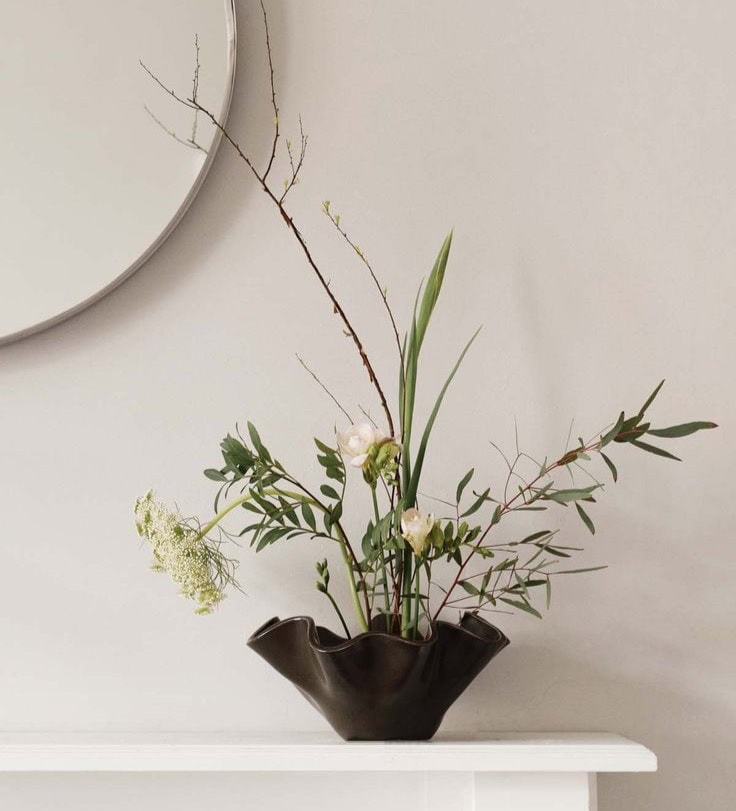
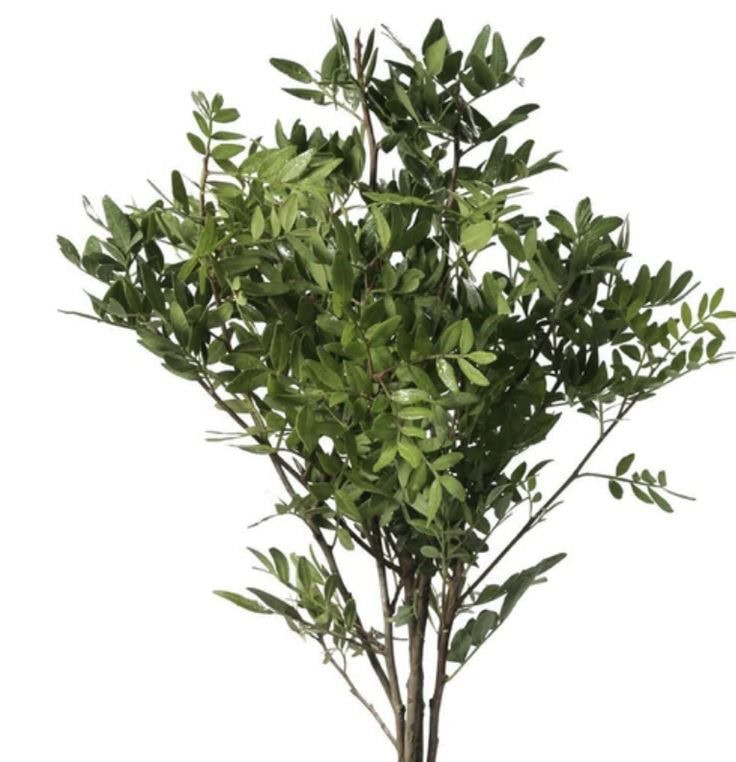
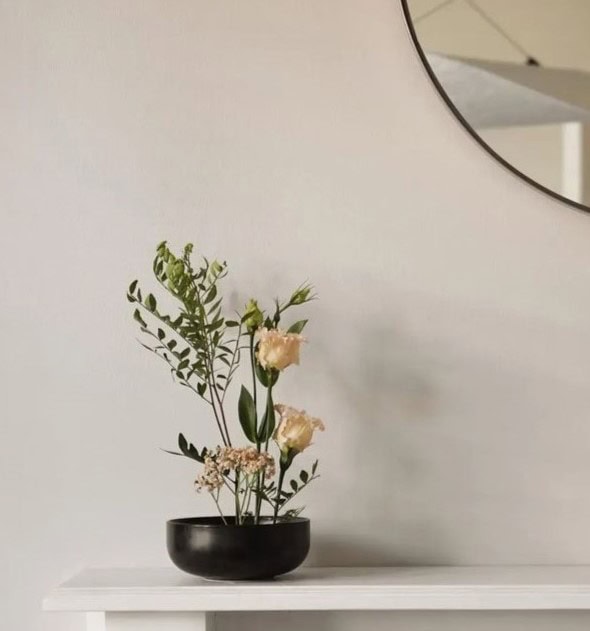
Vergatis (Tree Fern Greenery)
Vergatis, also known as tree fern, is a plant that grows in tropical regions of Australia and Southeast Asia. In some cultures, it is considered a symbol of eternity, as its green color does not fade easily and has lasting value.
What is it good for?
Vergatis is perfect for spring and summer bouquets. It is often used in arrangements with freesias and hydrangeas, giving them an almost magical freshness and cool nuance.
Combination:
It pairs beautifully with roses, eustoma and hydrangea. Since it has a light and airy character, it adds freshness and elegance to any arrangement
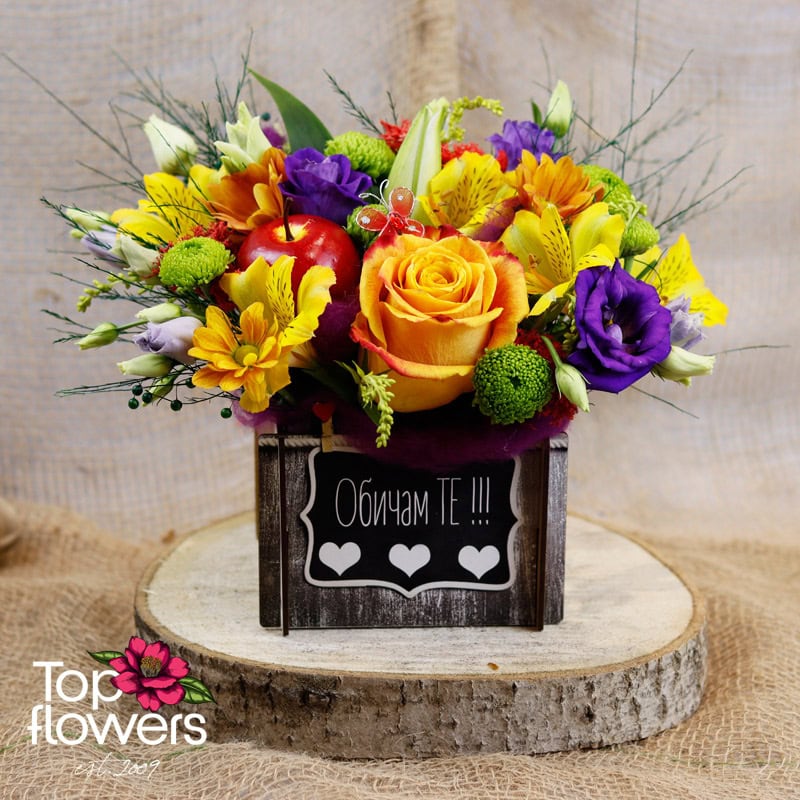
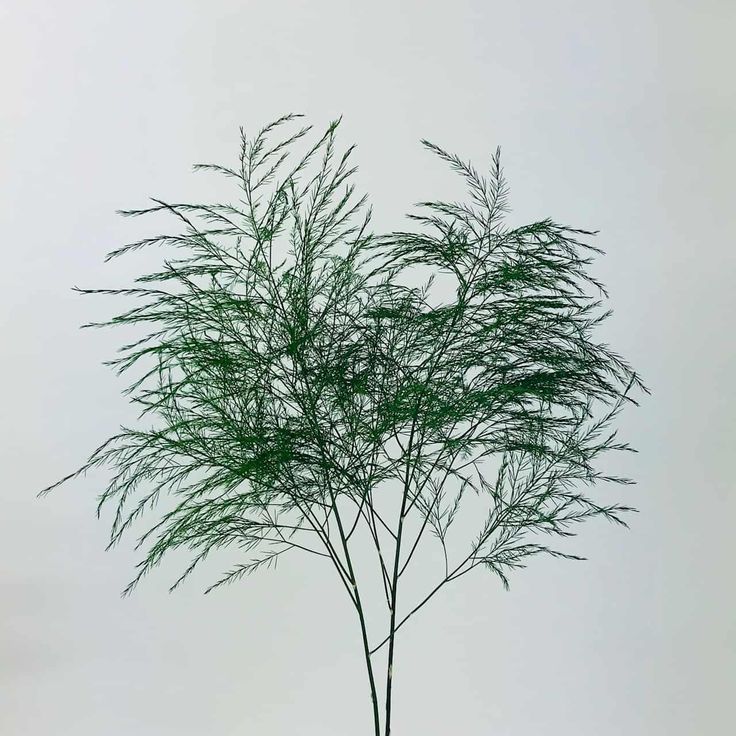
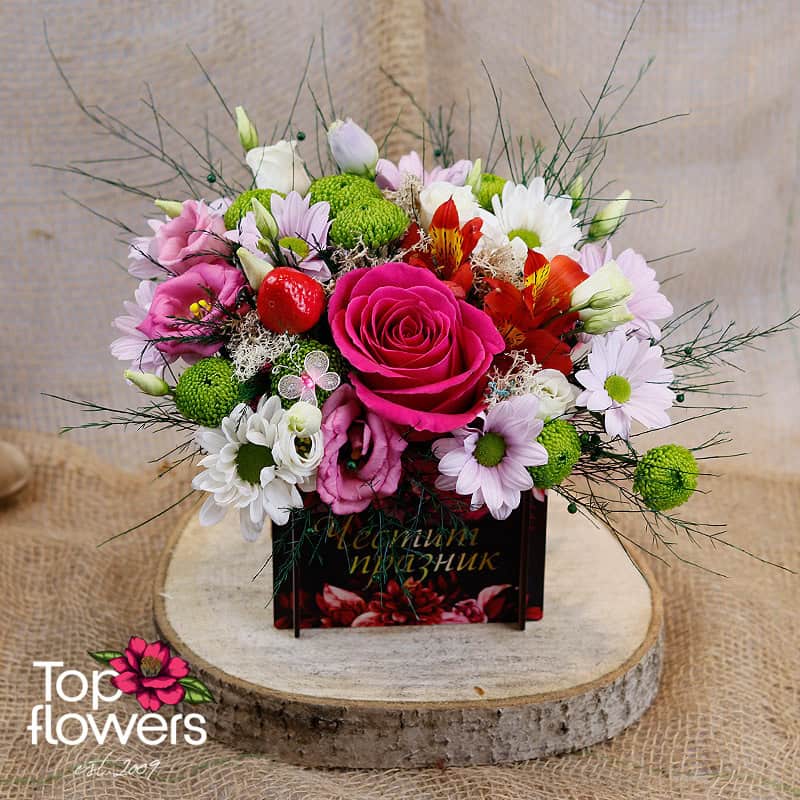
Lilac (Syringa)
The lilac is a symbol of youth, love, and spring. It is native to southeastern Europe and is beloved for its fragrant blooms and beautifully colored blooms. In many cultures, lilac is associated with things that are born with new beginnings – love and new beginnings.
It has small but fragrant flowers, usually found in purple and white tones. Its leaves are broad and elongated, giving volume and structure to the plant. Its aroma is sweet and soothing, attracting attention and creating a romantic atmosphere.
What is it suitable for?
Lilac is ideal for spring and summer bouquets. Its delicate aroma makes it a great choice for romantic compositions and bridal bouquets.
Combination:
This plant combines very well with tulips, freesias and ranunculus. It emphasizes elegance and adds tenderness to the compositions, making them even more romantic and bright.
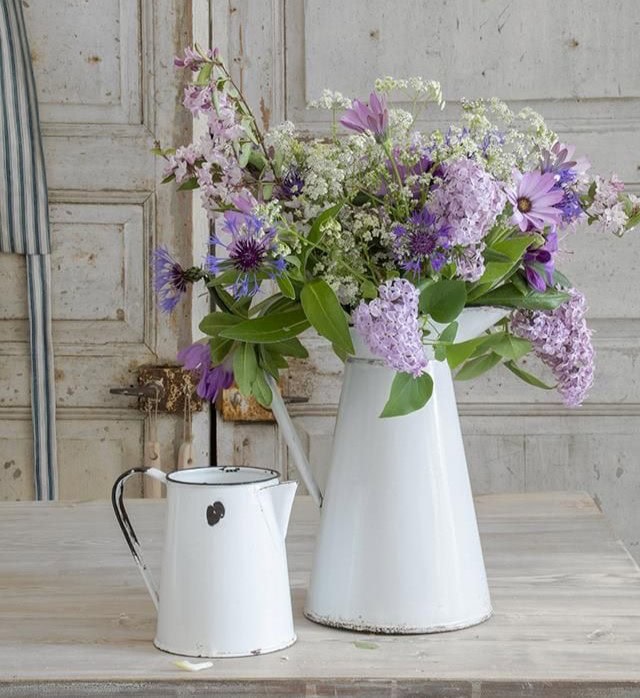
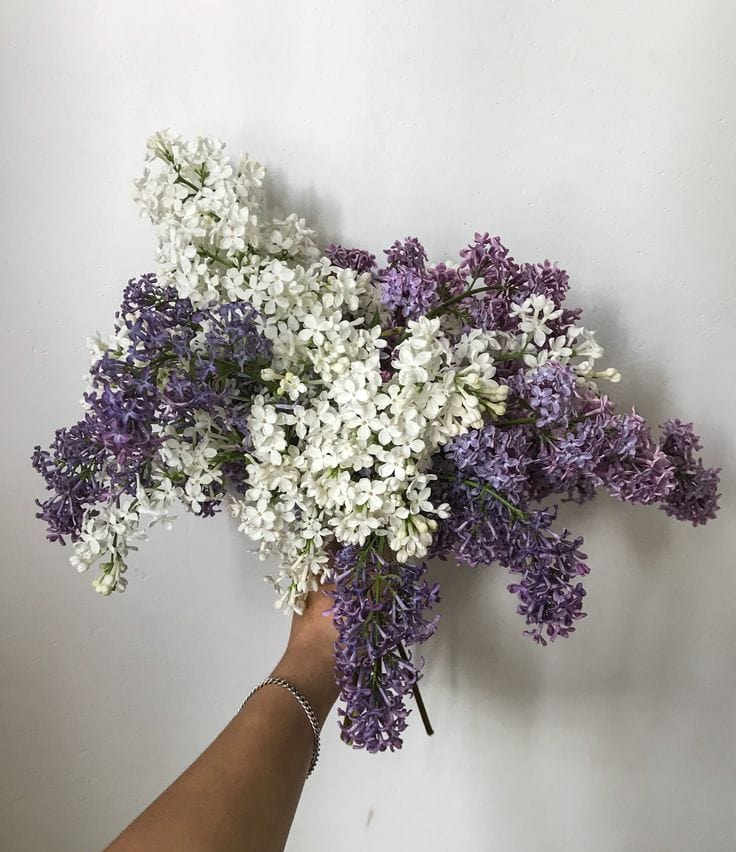
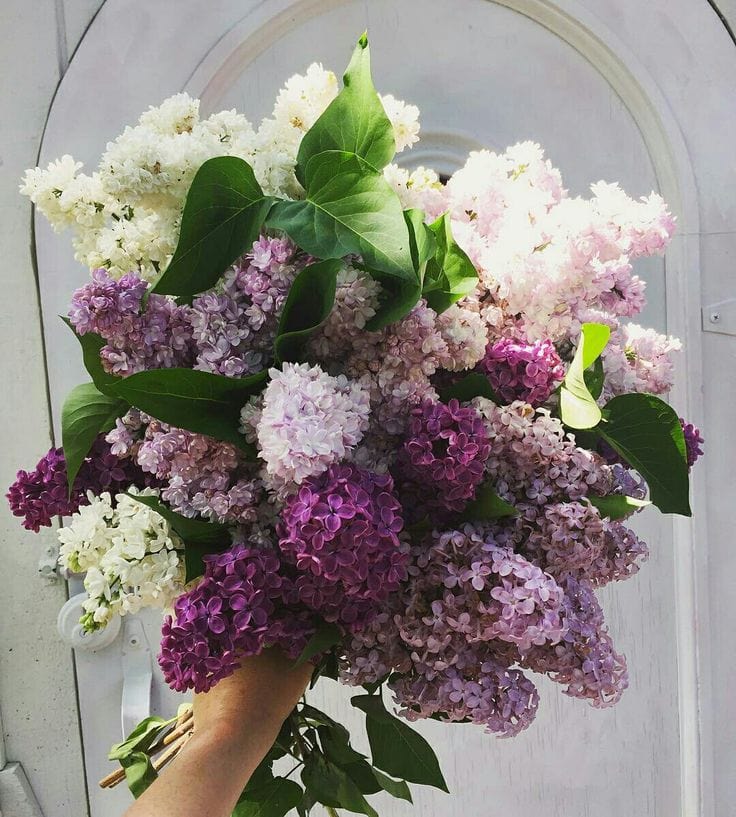
Aspidistra
Aspidistra is also known as the “iron plant” for its incredible durability. It originates from Asia and was a favorite foliage plant in British salons in the 19th century, when it was grown in wealthy aristocratic homes.
Its symbolism carries messages of resilience, longevity and elegance.
The leaves of the aspidistra are broad, shiny and long-lasting, making it ideal for bouquets and floral arrangements. They have a rich dark green color and add saturation and contrast to the more delicate flowers.
What is it suitable for?
It is used in formal, winter and bridal bouquets, as well as in floral arrangements for special occasions. It adds weight and depth to any composition, and thanks to its strength it is ideal for long-lasting bouquets.
Combination:
It pairs wonderfully with orchids, amaryllis and lilies, as their delicate colours stand out even more against its large, dense leaves. It also pairs well with smaller flowers like eustoma or freesia to create a balance between massiveness and tenderness.
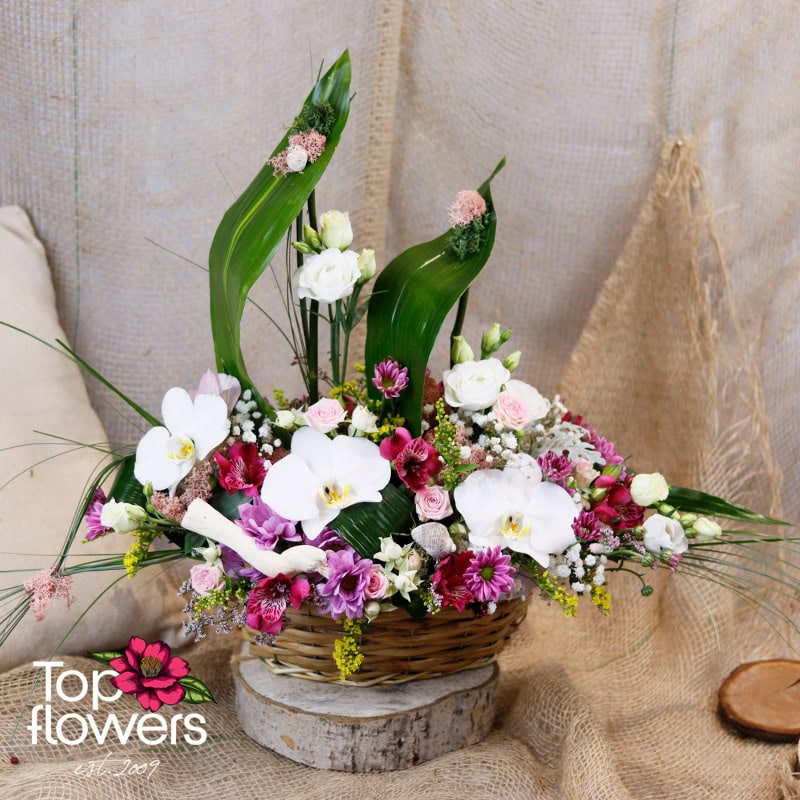
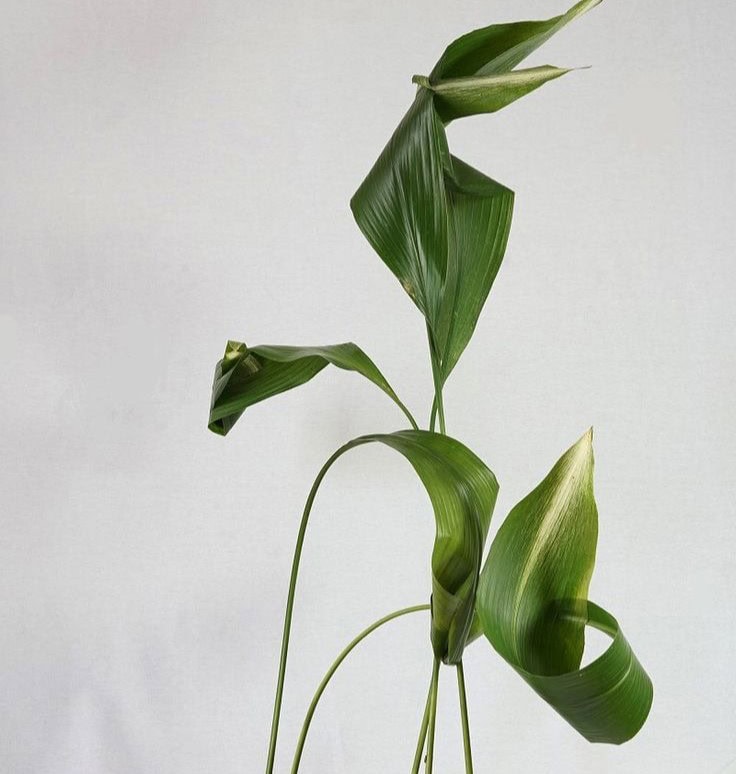
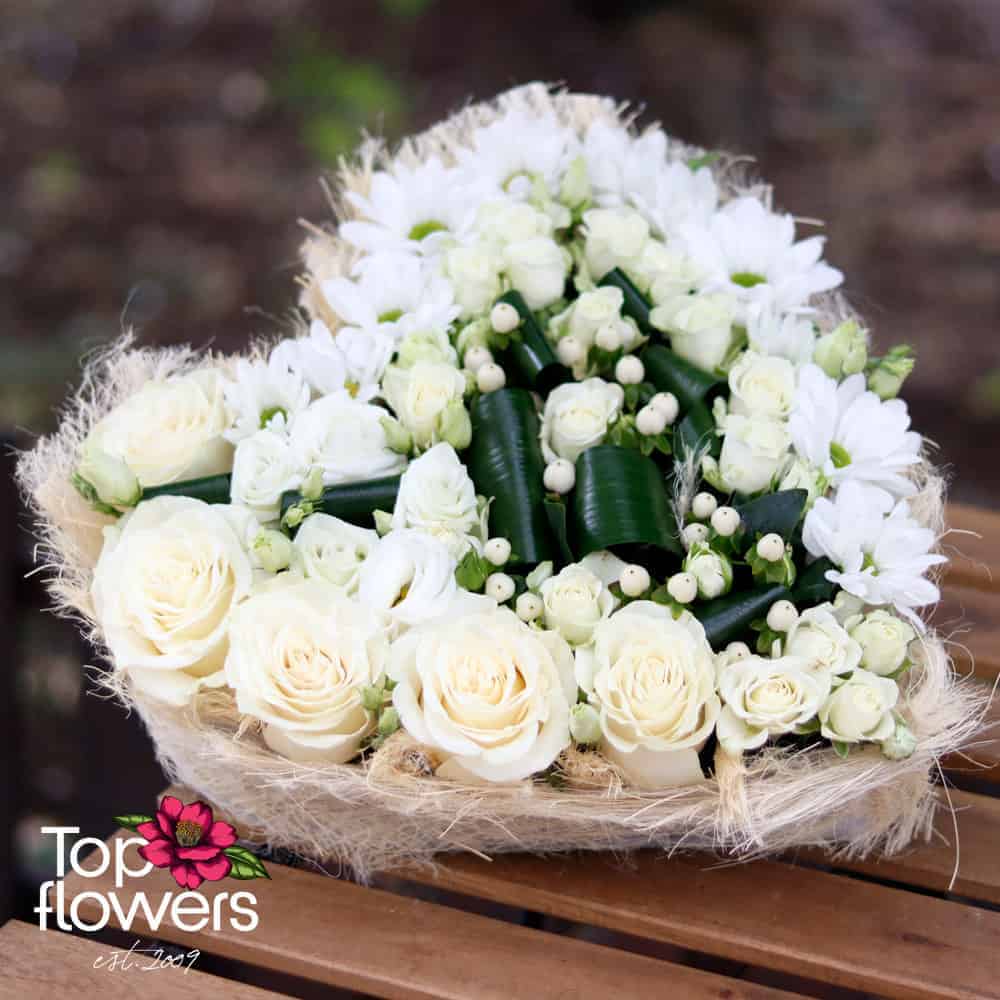
Chico (CHICO PALM) – An exotic accent for any arrangement
The Chico palm is one of the most popular palm plants used in floriculture. Its homeland is the tropical and subtropical regions of America and Asia, where it often grows in the wild. In ancient times, palm leaves were a symbol of victory, triumph and strength, and in more modern times they have become a sign of exoticism and luxury.
The leaves of the Chico palm are long, narrow and extremely resistant, which makes it preferred for bouquets and arrangements that need to retain their freshness for a long time. They have a rich green color and a slightly curved silhouette, which gives movement and dynamics to each composition.
What is it suitable for?
This foliage is particularly sought after for exotic, suitable for summer and bridal bouquets, where it adds freshness and elegance. It is also suitable for luxurious floral arrangements that need to stand out with sophistication and a modern look.
Combination:
It pairs perfectly with strelitzia, vanda orchid, roses and amaryllis, because it enhances their exotic look and gives the bouquet a stylish, yet light and airy finish.
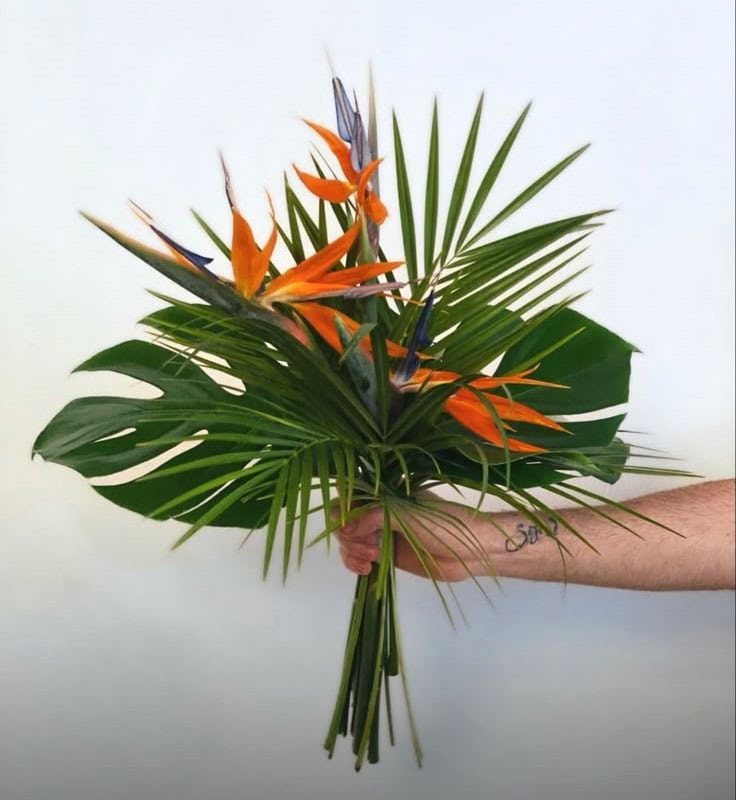
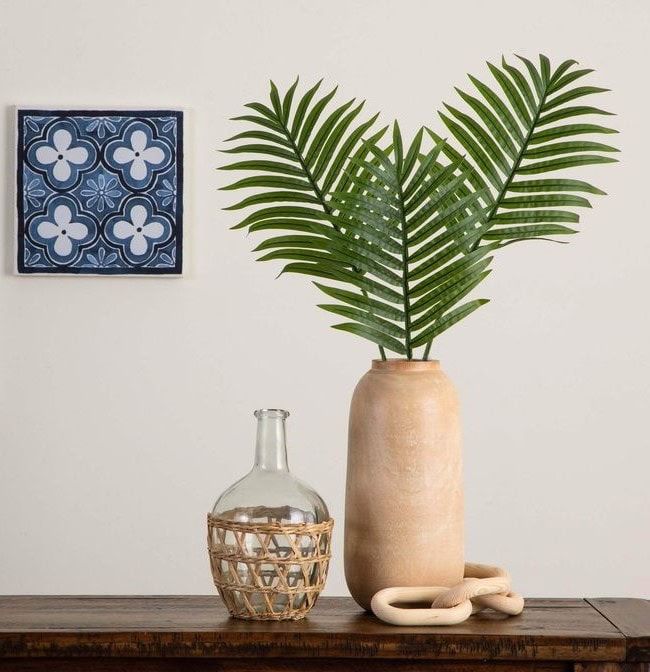
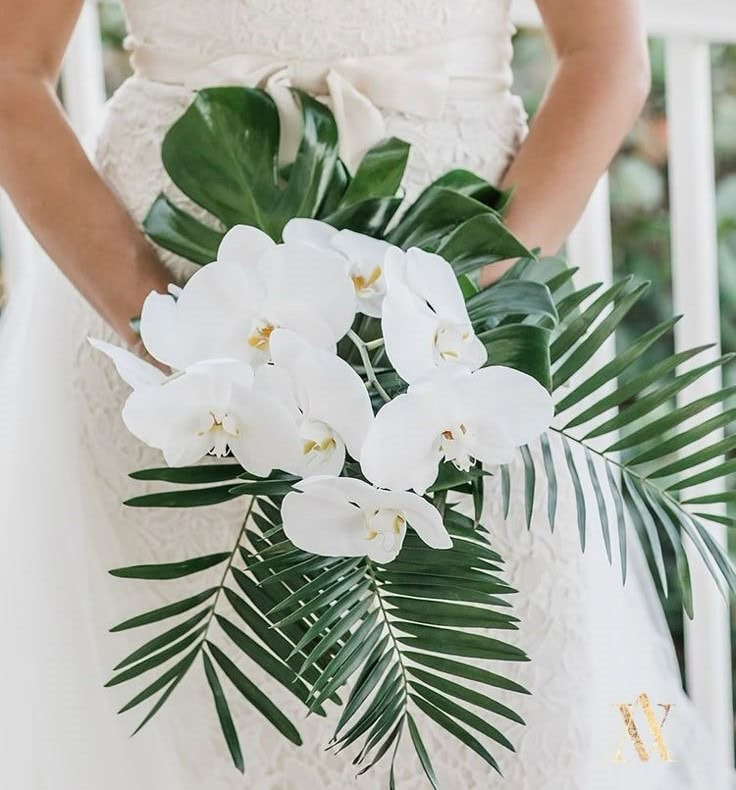
Ruscus hypoglossum (Ruscus hypoglossum)
The lingonberry, also known as the Italian lingonberry, is a plant with a long history in European flora. In the past, it was used not only for decorative purposes, but also as a symbol of endurance and resilience. In some cultures, the lingonberry was believed to have protective properties and could repel evil forces. In the aristocratic gardens of Europe, it was especially valued for its foliage, which remained fresh all year round.
The lingonberry is an evergreen plant with elegant, elongated leaves, which are actually modified stems (phylloclades). They have a smooth texture and a rich dark green color, which adds depth and richness to any arrangement.
What is it good for?
Due to its elegance and durability, the sublingual leaf is a great choice for classic bouquets and bridal arrangements. It is often used in winter and formal arrangements, where its leaves add volume and structure.
Combination:
It perfectly complements lilies, hydrangeas, roses and orchids, as its rich green color contrasts beautifully with the bright and delicate colors of these flowers. In addition, its delicate leaves bring sophistication and harmony, making bouquets more complete and stylish.
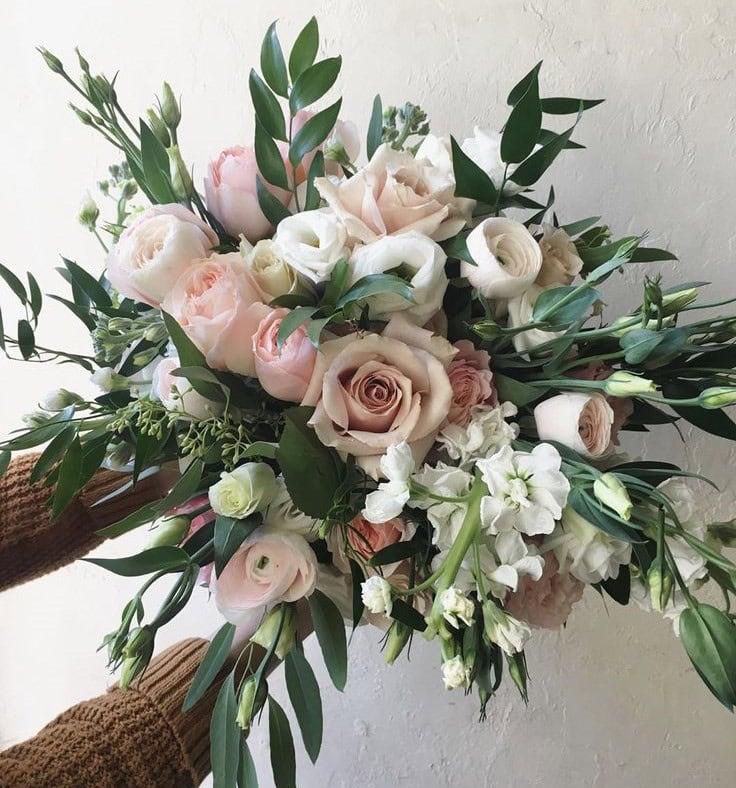
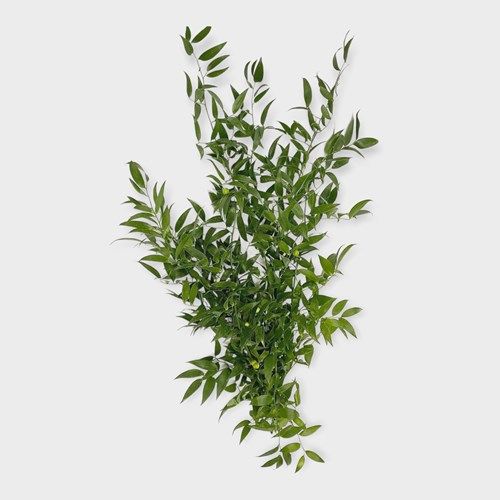
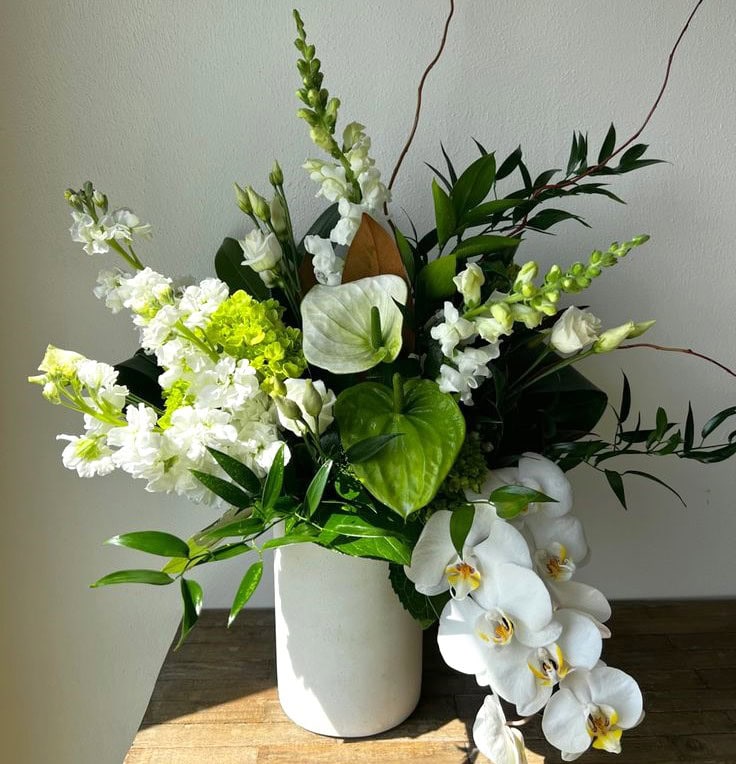
Ruscus aculeatus
The prickly myrtle, also known as “Christmas greenery” or “prickly myrtle,” is a plant with a rich history and deep symbolism. It has been used in European folk medicine since ancient times, and in some cultures it was believed to bring protection and good luck. In ancient Rome, soldiers wore crowns of prickly myrtle as a symbol of strength and resilience. In France and Italy, the plant is often used in winter arrangements and holiday decorations, especially around Christmas, for its deep green color and hardiness.
The prickly heath is an evergreen, perennial plant with hard, leathery leaves, which are actually modified twigs (phylloclades), and its small greenish flowers often remain inconspicuous. In late autumn and winter, the heath produces bright red fruits that resemble small wild cherries and add a decorative effect.
What is it good for?
Because prickly pear is extremely durable and stays fresh for a long time, it is ideal for winter arrangements, wedding bouquets, and holiday arrangements. Its leaves add structure and balance to bouquets, while also contributing to a sense of natural freshness.
Combination:
It pairs perfectly with amaryllis, chrysanthemums, red roses and lilies, as it highlights their elegance and adds a rich green contrast. It is also often used in Christmas wreaths and winter bouquets for its longevity and brightness.
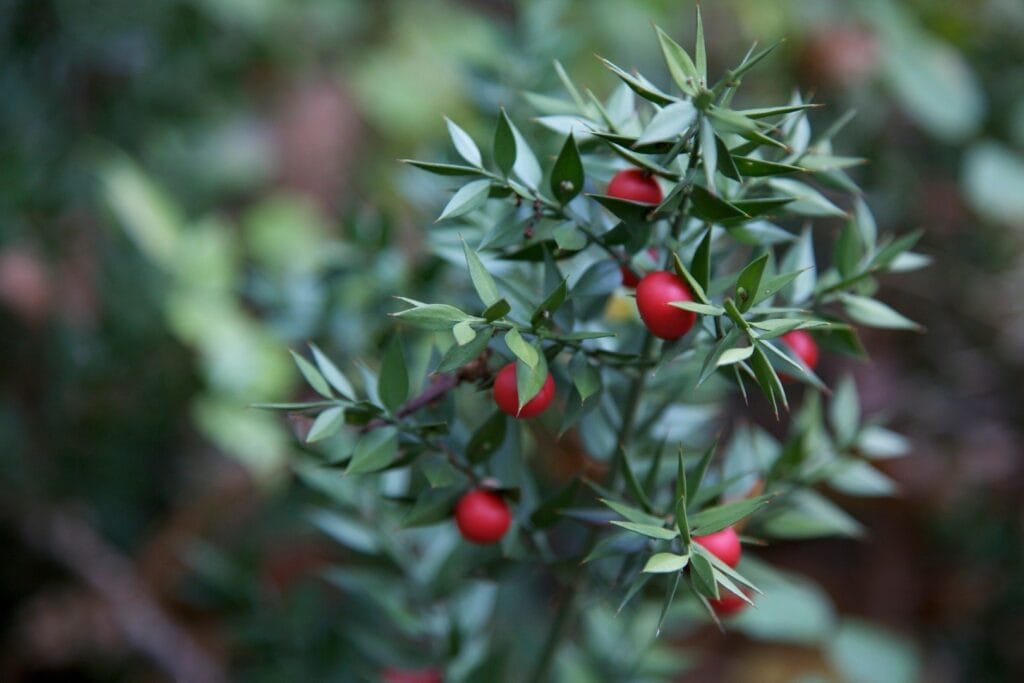
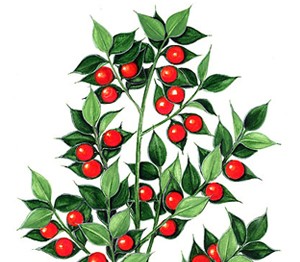
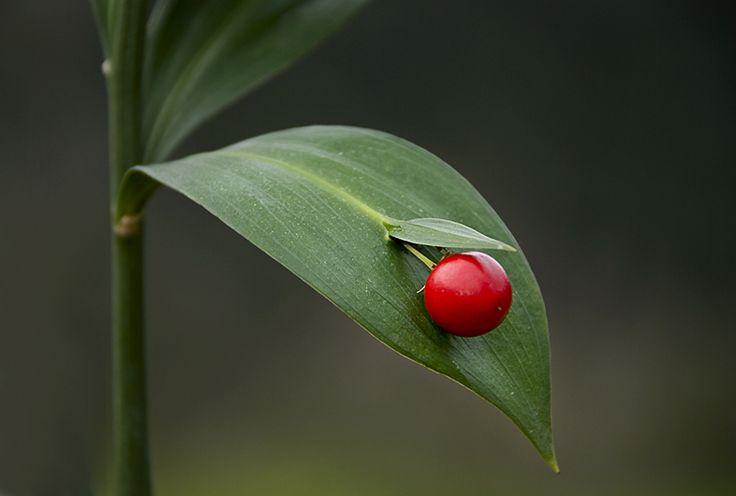
Conclusion
Greenery is not just a backdrop for beautiful flowers – it is the soul of every bouquet and arrangement. Each green plant carries its own history, symbolism and aesthetics that complement and emphasize the beauty of the flowers. Whether you are looking for tenderness and airiness, exoticism and originality or density and saturation, properly selected greenery can turn any composition into a true work of art.
It is important to note that greenery is seasonal and not all types are always available. Depending on the period and availability, in our store we sometimes make substitutions with alternative plants that fit aesthetically and harmoniously into the arrangement. Our professional florists always select the most suitable options so that the bouquets look beautiful, elegant and well-balanced.
In our store you will find a wide variety of high-quality greenery that will breathe life into your bouquets and make every arrangement unique. Trust our professionals and create the perfect bouquet with the best selection of fresh greenery! 🌿✨
